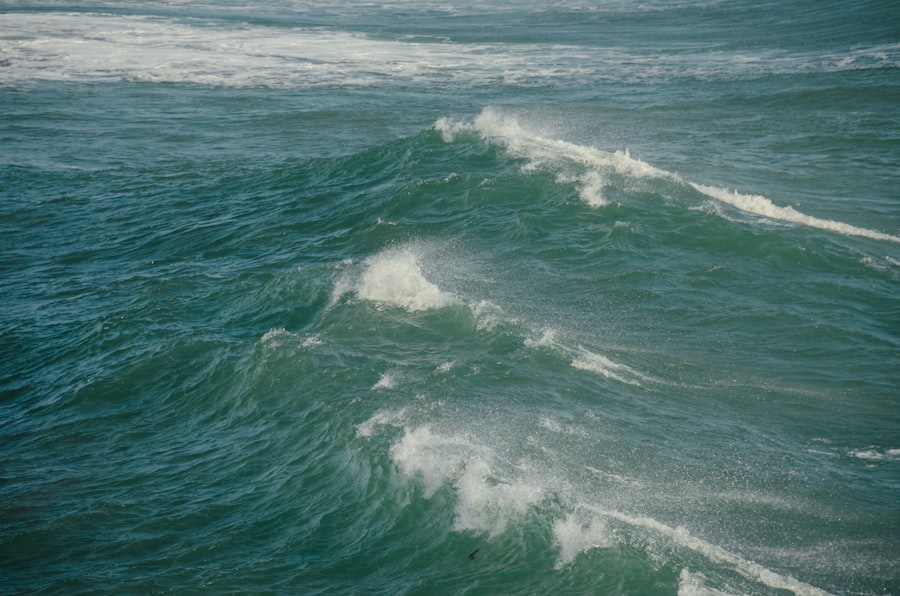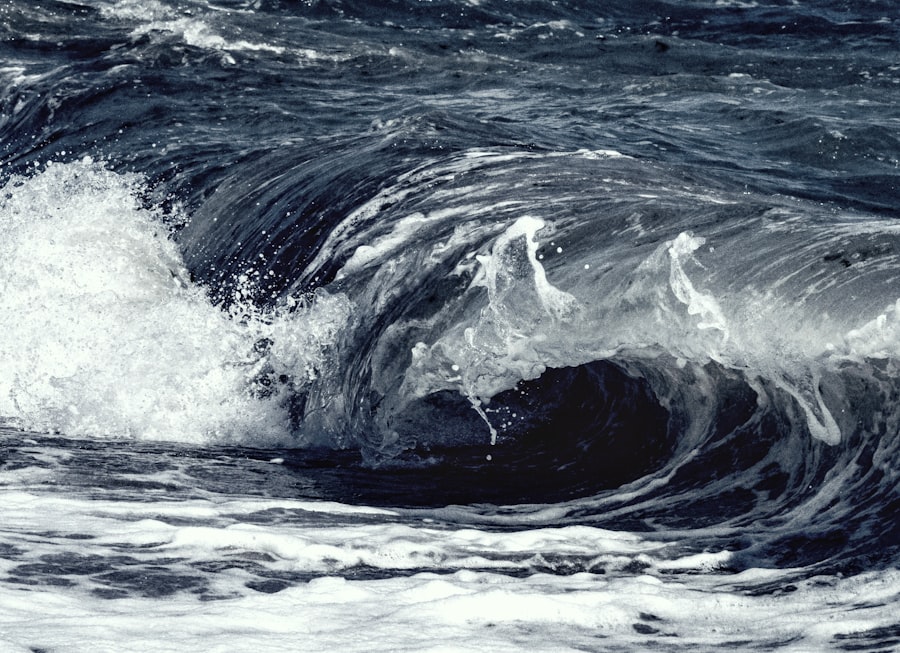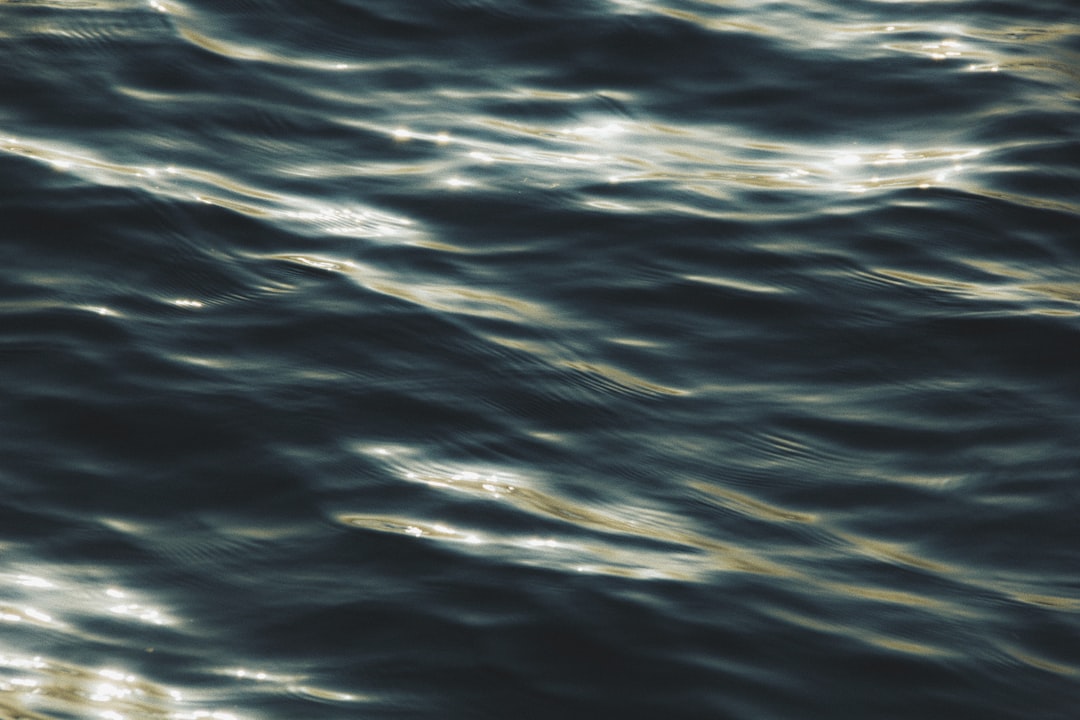The Drake Passage, a body of water situated between the southern tip of South America and Antarctica, is renowned for its tumultuous seas and unpredictable weather. Spanning approximately 800 kilometers (500 miles) in width, it serves as a critical maritime route for vessels traveling to and from the Antarctic region. The passage is named after Sir Francis Drake, the English explorer who navigated these waters in the late 16th century.
Its strategic importance cannot be overstated, as it connects the Atlantic and Pacific Oceans, allowing for the exchange of goods, research, and exploration. Geographically, the Drake Passage is characterized by its deep waters and strong currents, which are influenced by the confluence of various oceanic systems. The Antarctic Circumpolar Current flows through this region, creating a unique marine environment that is both rich in biodiversity and challenging for navigation.
The passage’s depth can reach over 4,000 meters (13,000 feet), making it one of the deepest oceanic channels in the world. This combination of depth and current contributes to the notorious reputation of the Drake Passage as one of the most treacherous maritime routes, often referred to as “the most dangerous sea in the world.“
Key Takeaways
- The Drake Passage is a treacherous body of water located between South America’s Cape Horn and the South Shetland Islands of Antarctica.
- The waves in the Drake Passage are some of the most powerful in the world, reaching heights of up to 30 meters and posing a significant challenge to sailors and vessels.
- Proper preparation for crossing the Drake Passage is essential, including securing loose items, reinforcing the vessel, and ensuring all crew members are well-trained and equipped for the journey.
- Navigating the waves of the Drake Passage requires careful planning, with tips for sailors including choosing the right route, monitoring weather conditions, and maintaining constant communication with other vessels and support teams.
- Safety measures for crossing the Drake Passage include wearing appropriate safety gear, securing all loose items on board, and having emergency plans in place in case of extreme weather or unforeseen circumstances.
The Power of Drake Passage Waves
The waves of the Drake Passage are legendary among sailors and marine enthusiasts alike. They are known for their height and ferocity, often reaching heights of over 10 meters (33 feet) during storms. The unique geography of the passage allows for the unimpeded flow of wind and water, creating conditions that can lead to massive swells.
These waves are not only a challenge for navigation but also a spectacle of nature’s raw power, drawing attention from researchers and adventurers who seek to understand their dynamics. The energy generated by these waves is a result of several factors, including wind speed, direction, and the fetch—the distance over which the wind blows across the water. In the Drake Passage, winds can reach speeds of up to 100 kilometers per hour (62 miles per hour), contributing to the formation of steep, breaking waves that can pose significant risks to vessels.
Sailors must be acutely aware of these conditions, as they can change rapidly and without warning, transforming a calm sea into a chaotic environment in a matter of moments.
Preparing for the Passage

Preparation is key when it comes to navigating the Drake Passage. Sailors must equip their vessels with the necessary tools and supplies to ensure a safe journey through these challenging waters. This includes not only standard safety equipment but also provisions for potential emergencies.
A well-stocked supply of food, water, and medical supplies is essential, as crossing the passage can take several days depending on weather conditions and vessel speed. In addition to physical preparations, mental readiness is equally important. Sailors should familiarize themselves with the specific challenges posed by the Drake Passage, including its unpredictable weather patterns and strong currents.
Engaging in thorough research about past voyages and current conditions can provide valuable insights that enhance preparedness. Furthermore, crew members should undergo training in seamanship and emergency procedures to ensure that everyone on board knows how to respond effectively in case of an emergency.
Navigating the Waves: Tips for Sailors
| Tip | Description |
|---|---|
| 1 | Check the weather forecast before setting sail |
| 2 | Keep an eye on the wind direction and speed |
| 3 | Use proper sailing techniques to navigate waves |
| 4 | Stay alert for changes in the water conditions |
| 5 | Have a plan for emergencies and know how to use safety equipment |
Successfully navigating the waves of the Drake Passage requires skill, experience, and a deep understanding of maritime navigation principles. One crucial tip for sailors is to maintain a steady course while being mindful of wave patterns. It is advisable to approach waves at an angle rather than head-on to minimize the impact on the vessel.
This technique helps to reduce the risk of broaching—a dangerous situation where a boat tips sideways due to large waves. Another important consideration is monitoring weather forecasts closely. Sailors should utilize advanced weather tracking technology to stay informed about changing conditions.
This includes understanding wind patterns, wave heights, and potential storm systems that may develop during the crossing. By being proactive in their approach to navigation, sailors can make informed decisions about when to set sail or alter their course to avoid particularly treacherous conditions.
Safety Measures for Crossing the Drake Passage
Safety measures are paramount when crossing the Drake Passage due to its reputation for sudden storms and rough seas. One essential safety measure is ensuring that all crew members are equipped with personal flotation devices (PFDs) at all times while on deck.
Additionally, vessels should be equipped with lifeboats and emergency signaling devices to facilitate rescue operations if needed. Regular safety drills should also be conducted before embarking on the journey. Crew members should practice man-overboard procedures, fire drills, and abandon ship protocols to ensure everyone knows their roles in an emergency situation.
Furthermore, maintaining open lines of communication among crew members is vital for effective coordination during challenging circumstances. By fostering a culture of safety awareness and preparedness, sailors can significantly reduce risks associated with crossing the Drake Passage.
Weather Conditions in the Drake Passage

The weather conditions in the Drake Passage are notoriously volatile, characterized by rapid changes that can occur within hours or even minutes. Sailors must contend with strong winds, heavy precipitation, and low visibility that can complicate navigation efforts. The passage experiences a unique climatic phenomenon known as “the Roaring Forties,” where powerful westerly winds prevail due to the Earth’s rotation and geographical features.
During certain times of the year, particularly in late autumn and winter, storms can become more frequent and intense. These storms often bring with them towering waves and fierce winds that can challenge even experienced sailors. Understanding seasonal patterns is crucial for those planning to navigate this passage; many choose to embark during the summer months when conditions are generally milder.
However, even during this period, sailors must remain vigilant as weather systems can shift unexpectedly.
The Impact of Drake Passage Waves on Wildlife
The waves of the Drake Passage do not only affect human activities; they also play a significant role in shaping marine ecosystems. The turbulent waters create nutrient-rich upwellings that support diverse marine life, including krill, fish, and various species of seabirds. These organisms thrive in the nutrient-dense waters brought about by the mixing of currents, making the passage an essential feeding ground for many species.
Additionally, larger marine mammals such as whales often traverse these waters in search of food. The presence of krill—an important food source—attracts species like humpback whales and orcas to the area. However, the harsh conditions posed by high waves can also impact these animals’ behavior and migration patterns.
Understanding how wildlife interacts with these dynamic environments is crucial for conservation efforts aimed at protecting marine ecosystems in and around the Drake Passage.
Historical Accounts of Drake Passage Waves
Throughout history, numerous accounts have documented the challenges faced by sailors navigating the Drake Passage. Early explorers like Sir Francis Drake himself encountered fierce storms and towering waves that tested their resolve and seamanship skills. These historical narratives often highlight not only the dangers but also the awe-inspiring beauty of nature’s power as sailors braved these tumultuous waters.
In more recent times, accounts from modern expeditions continue to emphasize the unpredictable nature of the passage. Sailors recount experiences where calm seas suddenly transformed into raging storms within hours, forcing them to adapt quickly to survive. These stories serve as cautionary tales for future generations of sailors who seek to traverse this formidable maritime route.
The Role of Technology in Navigating the Passage
Advancements in technology have significantly improved navigation through the Drake Passage over recent years.
This information allows sailors to make informed decisions about their course and speed while monitoring potential hazards.
Moreover, weather forecasting technology has evolved dramatically, enabling sailors to access accurate predictions about wind patterns and wave heights well in advance of their journey. Satellite imagery and oceanographic data provide valuable insights into changing conditions that can affect navigation strategies. As technology continues to advance, it plays an increasingly vital role in enhancing safety and efficiency for those crossing this challenging maritime route.
Famous Expeditions and Voyages through the Drake Passage
The Drake Passage has been a backdrop for numerous famous expeditions throughout history, each contributing to our understanding of this unique region. One notable expedition was led by Ernest Shackleton during his ill-fated attempt to cross Antarctica in 1914-1916. Shackleton’s journey through these treacherous waters became legendary not only for its challenges but also for his remarkable leadership in ensuring his crew’s survival against all odds.
Another significant voyage was undertaken by oceanographer Jacques Cousteau, who explored the marine ecosystems within the passage during his expeditions in the mid-20th century. Cousteau’s work brought attention to the rich biodiversity found in these waters and highlighted the importance of conservation efforts aimed at protecting fragile marine environments.
The Future of Navigating the Drake Passage
As global climate change continues to impact weather patterns worldwide, navigating the Drake Passage may become increasingly complex in the future. Changes in ocean temperatures could alter current systems and affect wave dynamics within this critical maritime route. Sailors will need to adapt their strategies accordingly while remaining vigilant about environmental changes that may influence navigation safety.
Furthermore, advancements in technology will likely play a pivotal role in shaping future voyages through the passage. Innovations such as autonomous vessels equipped with artificial intelligence may revolutionize how sailors approach navigation challenges posed by unpredictable weather conditions. As exploration continues into this remote region, understanding both its historical significance and future implications will be essential for those who seek to navigate its powerful waves safely.
In conclusion, navigating the Drake Passage presents both challenges and opportunities for sailors venturing into one of nature’s most formidable environments. With proper preparation, knowledge of weather conditions, adherence to safety measures, and an appreciation for historical accounts and technological advancements, sailors can embark on their journeys with confidence while respecting this awe-inspiring maritime route’s power and beauty.
Recently, the Drake Passage has been making headlines due to its notoriously turbulent waves, which have been a subject of fascination and study for oceanographers and adventurers alike. For those interested in exploring more about the geographical and environmental significance of this region, an insightful article can be found on MyGeoQuest. This piece delves into the unique conditions that contribute to the Drake Passage’s formidable waves and their impact on marine navigation. To read more about this intriguing topic, visit the article on MyGeoQuest by clicking here.
WATCH NOW! Drake Passage: Earth’s Deadliest Waters Revealed
FAQs
What are Drake Passage waves?
Drake Passage waves are large and powerful ocean waves that occur in the Drake Passage, the body of water between South America’s Cape Horn and the South Shetland Islands of Antarctica. These waves are known for their extreme size and strength, making the passage one of the most challenging maritime routes in the world.
What causes the formation of Drake Passage waves?
Drake Passage waves are primarily caused by the strong westerly winds and the interaction between the Antarctic Circumpolar Current and the Southern Ocean. The combination of these factors creates a unique and intense wave environment in the region.
How large can Drake Passage waves get?
Drake Passage waves can reach extraordinary heights, with some waves exceeding 30 meters (nearly 100 feet) in height. These massive waves pose significant challenges to ships and vessels navigating through the passage, requiring careful planning and seamanship to safely traverse the area.
What are the implications of Drake Passage waves for maritime activities?
The presence of Drake Passage waves presents significant challenges for maritime activities in the region. Ships and vessels crossing the passage must be prepared to encounter extreme wave conditions, which can impact navigation, stability, and the safety of crew and cargo. Additionally, the potential for severe weather and rough seas further complicates maritime operations in the area.
Are there any specific safety measures for navigating Drake Passage waves?
Due to the hazardous nature of Drake Passage waves, ships and vessels crossing the area often employ various safety measures to mitigate the risks. These may include careful route planning, use of specialized vessels designed to withstand rough seas, and adherence to strict safety protocols to ensure the well-being of crew and passengers.
